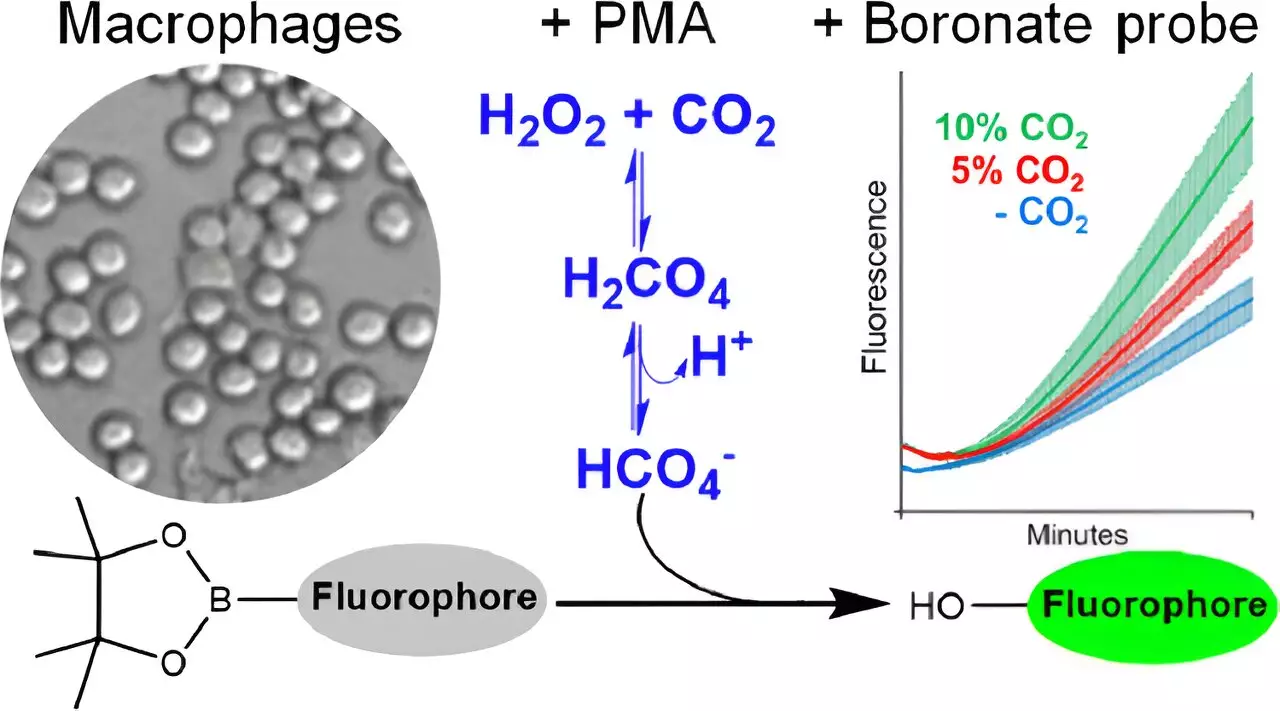The rise in atmospheric carbon dioxide (CO2) has sparked extensive discussions about its impact on global climate and human health. However, recent studies delve into a more intricate relationship between CO2 and cellular biochemical processes. Elevated levels of CO2 not only provoke environmental shifts but can also significantly influence the biochemical activities within our cells. This interplay, particularly with hydrogen peroxide (H2O2), leads to the generation of peroxymonocarbonate, a molecule that has garnered increasing attention in scientific circles.
Researchers, including esteemed scholar Ohara Augusto from the University of São Paulo, emphasize the importance of understanding peroxymonocarbonate, asserting that it plays a crucial role in both adaptive cellular responses and dysfunction. Despite its rapid emergence in research, the mechanisms through which CO2 inflicts toxicity remain elusive, underscoring the need for systematic exploration.
A groundbreaking study published in the journal *Chemical Research in Toxicology* by Augusto’s team marks a pivotal moment in biochemical exploration. For the first time, researchers have successfully detected peroxymonocarbonate in living cells through an innovative method involving fluorescent molecular probes. This advancement not only challenges long-standing beliefs about the molecule’s cellular presence but also opens a pathway for further studies regarding the biochemical implications of CO2.
To achieve this, the research team utilized boronate probes to gauge fluorescence levels, closely monitoring the interaction of hydrogen peroxide with CO2. Through experimentally engineered conditions mimicking physiological states, the researchers activated macrophages—critical components of the immune system—to produce hydrogen peroxide. This careful experimental design allowed them to pinpoint peroxymonocarbonate’s presence under specific cellular states, marking a significant leap in redox research.
The implications of detecting peroxymonocarbonate are profound. It is suggested that this molecule could catalyze certain cellular responses, potentially exacerbating oxidative stress under elevated CO2 conditions. This is particularly relevant as climate change continues to elevate CO2 levels in urban environments, where physiological responses to increased atmospheric carbon could manifest in serious health concerns.
Augusto’s research underlines that peroxymonocarbonate not only serves as a proxy in studies examining oxidative stress but also influences gene expression related to inflammation and cell injury responses. The idea that this molecule can stimulate the creation of antioxidant enzymes is notable; it underscores a cellular adaptation mechanism to stressors like oxidative damage.
The significance of CO2 extends beyond its mere presence as a gas in our atmosphere; it acts as an integral player in redox signaling pathways. The ability of CO2 to modulate the effects of hydrogen peroxide and peroxynitrite, both of which are crucial in redox biology, highlights its importance in maintaining cellular homeostasis. However, the balance is delicate. Higher concentrations of oxidants, whether from external factors or physiological processes, might shift the balance towards cellular damage.
Moreover, experiments indicate that processes such as protein nitration and carbamylation are influenced by elevated CO2 levels. These post-translational modifications markedly alter protein functions, potentially setting the stage for various diseases.
While the advancements in detecting peroxymonocarbonate open exciting new avenues for research, it is crucial to approach these findings with caution. More comprehensive investigations are needed to fully elucidate CO2’s role as a biological oxidant and its multifaceted interactions within cellular environments. Enhanced focus on the redox implications of oxidative stress, particularly under conditions emulating future climate scenarios, will not only contribute to biochemical sciences but also inform public health strategies amidst rising global CO2 levels.
As we advance our understanding of peroxymonocarbonate and its chemical behavior in cells, we can better comprehend the cascading effects of climate change on human health. This burgeoning field of study obliges us to rethink not just environmental policy but also our perception of how atmospheric changes impact our biochemistry. It is evident that the hidden implications of carbon dioxide extend far beyond climate, enveloping us in a web of intricate cellular dynamics that warrant our immediate attention.


Leave a Reply